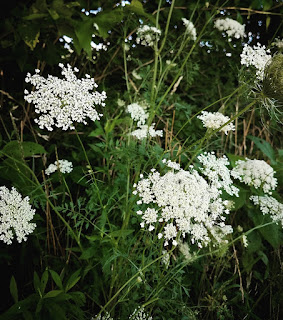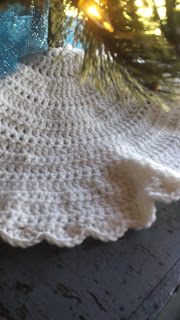The Beauty of Queen Anne's Lace
For many people, Queen Anne's Lace is just another weed, but for me, it brings back memories of being a kid...
Queens Anne's Lace would grow between the old cars and metal in my dad's junk yard and in the ditches of the country roads.... I loved the dainty, lacy, look of the flowers.
Queen Anne's Lace is one of our most common roadside wildflowers or weeds, depending on your perspective.
The Queen Anne’s Lace, also known as wild carrot, is a wildflower herb found in many parts of the United States, yet it was originally from Europe. It is a member of the parsnip family, is the wild progenitor of the cultivated carrot.
Queen Anne’s lace can reach heights of about 1 to 4 feet. This plant has attractive, fern-like foliage and tall, hairy stems that hold a flattened cluster of tiny white flowers, with a single dark-colored floret just off its center. You can find these biennials in bloom during their second year from spring on into fall.

Queen Anne’s lace is said to have been named after Queen Anne of England, who was an expert lace maker. Legend has it that when pricked with a needle, a single drop of blood fell from her finger onto the lace, leaving the dark purple floret found in the flower’s center.





Comments
Post a Comment
I'd love to hear your comments: